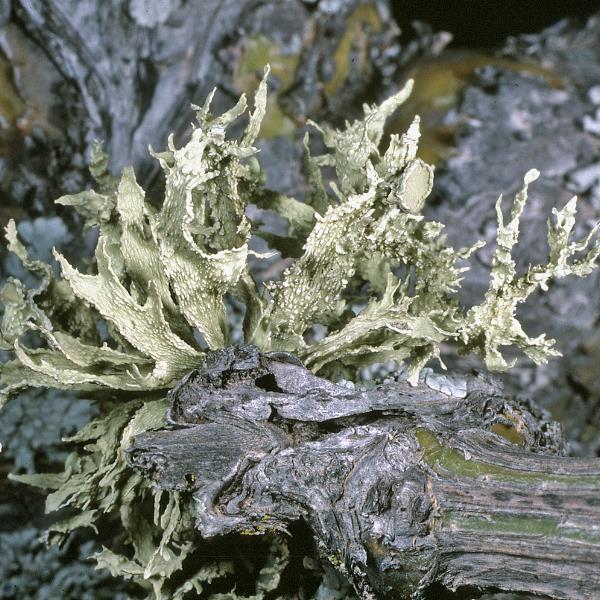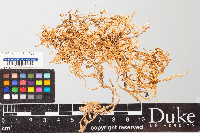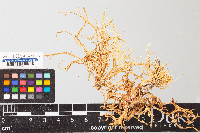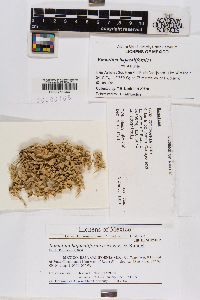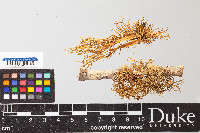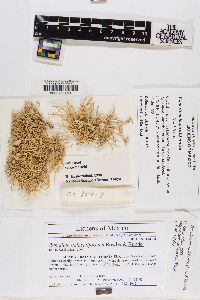
- Home
- Search
- Images
- Species Checklists
- US States: O-Z >
- US National Parks
- Central America
- South America
- US National Parks
- Southern Subpolar Region
|
|
|
|
Family: Ramalinaceae
|
Nash, T.H., Ryan, B.D., Gries, C., Bungartz, F., (eds.) 2004. Lichen Flora of the Greater Sonoran Desert Region. Vol 2. CORRECTION: The color photo in the Sonoran Flora is misleading. The species does not form tuberculate pseudocyphellae, which are clearly visible in the photo. The image by most likely shows a specimen of R. aspera or R. sinaloensis, which both occur in the region and form abundant tubercules. Thallus: fruticose, shrubby to subpendulous, up to 10(20) cm long branching: dichotomously or irregularly branched, growing from a narrow holdfast branches: solid, flat or weakly canaliculate, up to 5 mm wide surface: greenish yellow, soon turning reddish brown in herbaria, smooth, shiny, without soredia pseudocyphellae: common, laminal or rarely marginal, short linear (up to 1.3 mm long), +elevated cortex: thin; chondroid strands: discontinuous, smooth, never forming bundles of hyphae Apothecia: common, laminal or submarginal, stipitate disc: concave, heavily pruinose with gray-blue pruina, entire; margin: concolorous with the thallus, entire, usually with pseudocyphellae asci: elongate-clavate, 8-spored ascospores: hyaline, 1-septate, narrowly fusiform, 16-22 x 3.2-4 µm Spot tests: cortex K-, C-, KC+ yellow, P-; medulla K+ yellow turning red, C-, KC-, P+ orange Secondary metabolites: cortex with usnic acid (major); medulla with salazinic acid (major). Substrate and ecology: on twigs World and Sonoran distributions: Baja California, Baja California Sur, Sinaloa, and Sonora. Notes: When Bowler and Rundel (1973) described R. moranii, they stressed the occurrence of smaller (8.8-15.4 x 3.3-4.4 µm) ascospores for that species. However, the type specimen has short linear pseudocyphellae, apothecial discs without a white margin, smooth chondroid strands, narrowly fusiform ascospores (18-22 x 3.5 µm) and produces salazinic acid. Because of the congruence of these characters with the description above, R. moranii is reduced to a synonym of R. bajacalifornia. Differences with R. sonorensis are given below that species. This species is one of the most common species of Ramalina in the Sonoran area where it grows on branches of trees or cactus. Most specimens collected in the Sonoran area and cited as R. denticulata on old herbarium packets were reannotated to R. bajacalifornica or R. canalicularis. |

